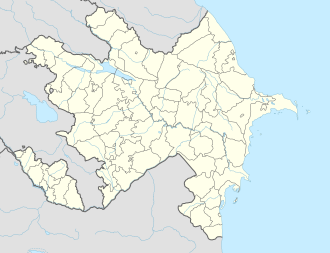Top Qs
Timeline
Chat
Perspective
Yeghishe Arakyal Monastery
From Wikipedia, the free encyclopedia
Remove ads
Yeghishe Arakyal Monastery (Armenian: Եղիշե առաքյալի վանք, romanized: Yeghishe Arakyali Vank) or Monastery of Yeghishe the Apostle (Azerbaijani: Müqəddəs Yelisey monastırı) is an Armenian Apostolic Church, in the region of Nagorno-Karabakh, Azerbaijan, located close to the village of Madagiz, on the bank of the Tartar River. The complex comprises the church, seven chapels, a cemetery, and ruins of other buildings.[1]
Remove ads
History

Yeghishe Arakyal Monastery was built sometime in the 5th century, although the primary church was built in the 1165. According to the medieval historian Movses Kaghankatvatsi, the monastery was renamed after the Yeghishe, a disciple of Thaddeus the Apostle, after Yeghishe's relics were moved there.[2] One of the seven chapels surrounding the minster is the tomb of Vachagan III, King of Caucasian Albania, also known as Vachagan the Pious (487–510); another chapel contains the grave of Melik-Atam the Great (Melik-Israelian) of Jraberd.[3] In the Middle Ages, Yeghishe Arakyal Monastery became a highly important center of culture and learning in Artsakh; it produced and held numerous manuscripts and documents.[4]
Throughout the Nagorno-Karabakh conflict, the monastery remained largely untouched due to its inaccessible location. However, the growth of vegetation and natural weathering have weakened the structure over time.[2]
Remove ads
Gallery
- Refectory
- Doorway to the vestibule with tympanum and carvings
- One of the chapels
- Khachkar
- Khachkars
- Armenian inscription
See also
References
External links
Wikiwand - on
Seamless Wikipedia browsing. On steroids.
Remove ads








